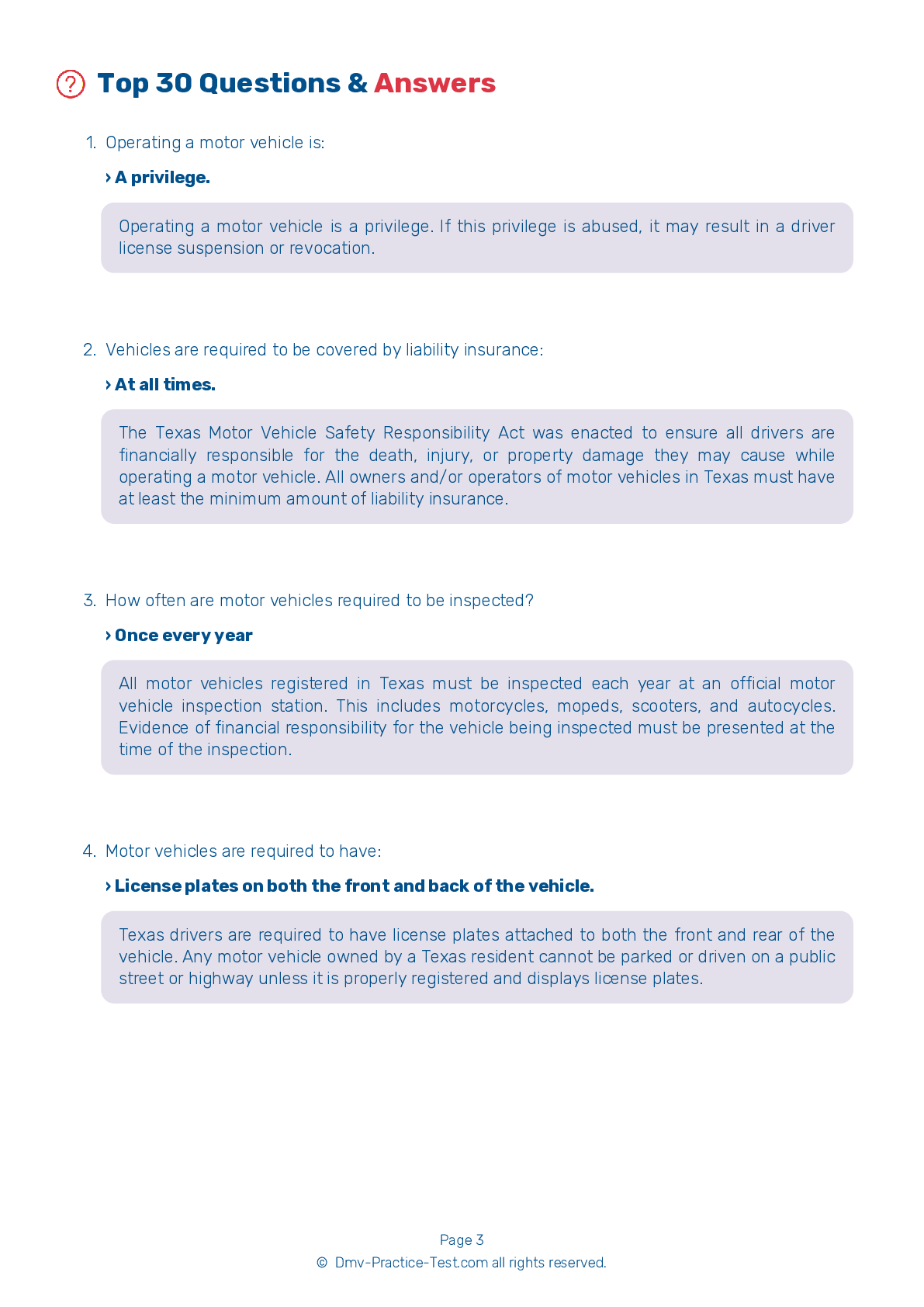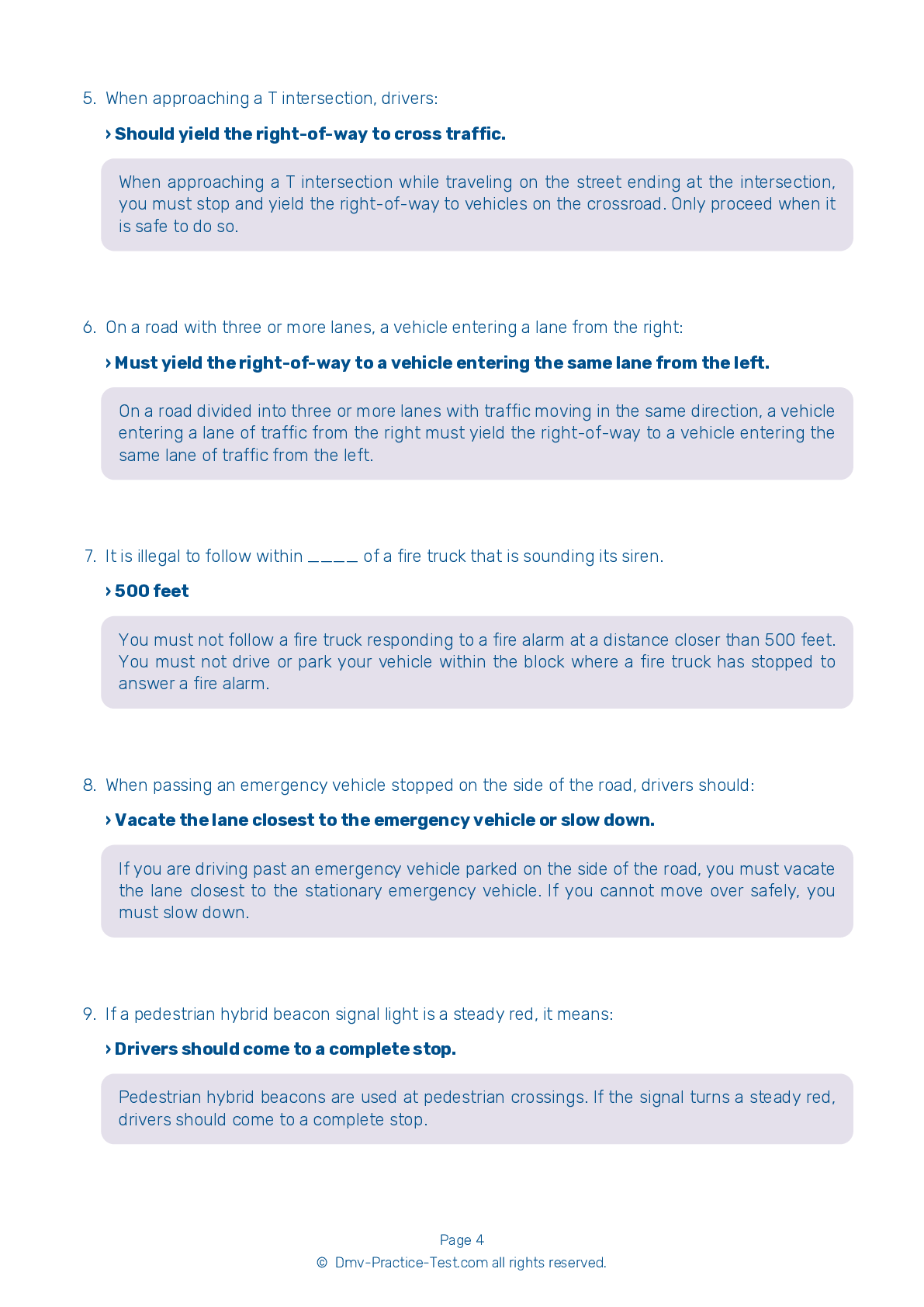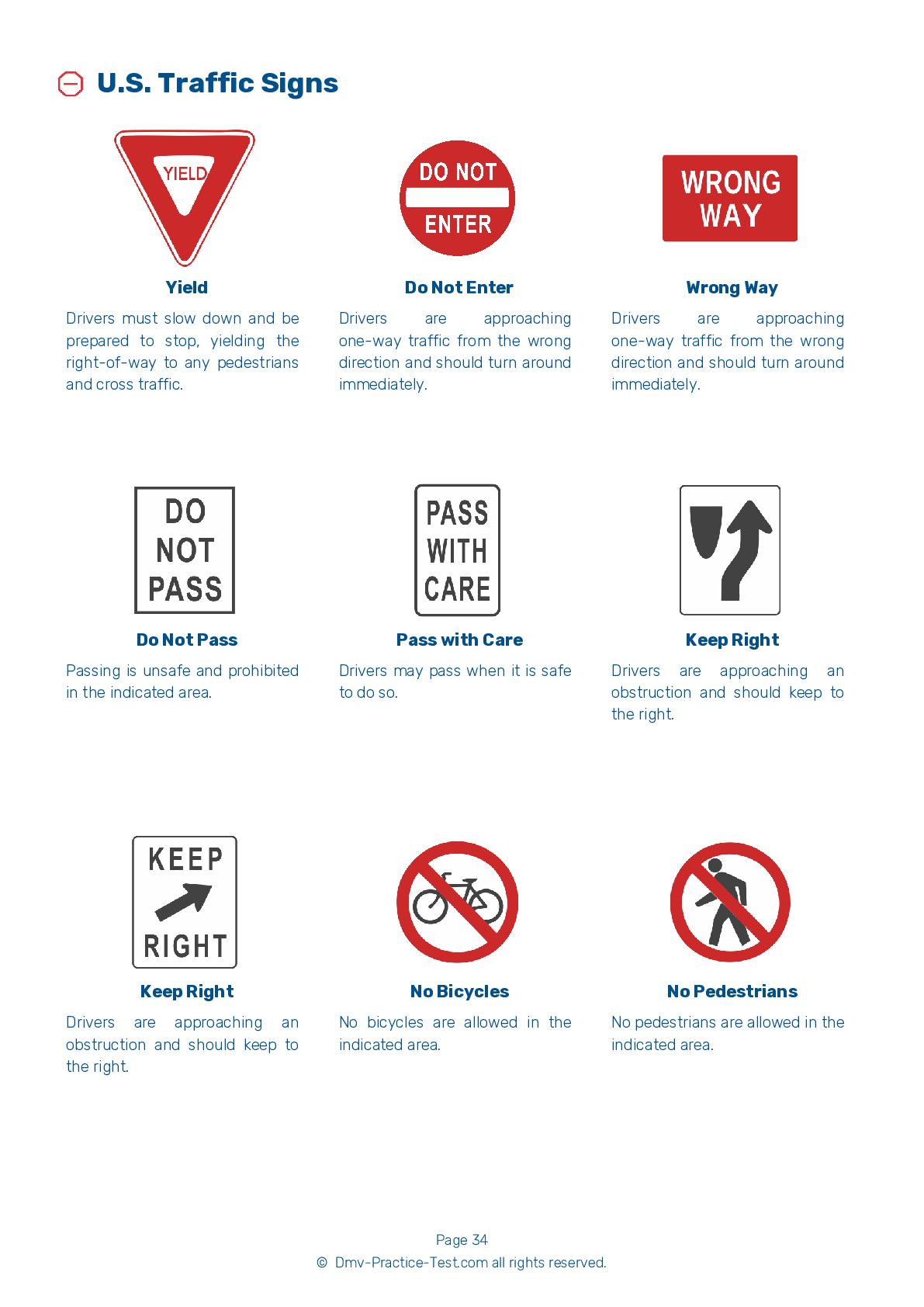FREE Texas DMV Practice Test #20 Page 3 of 5
For January 2025, the Texas DMV practise exams have been revised. It comprises questions based on the most important traffic signals and laws for 2025 from the Texas Driver Handbook. To study for the DMV driving permit test and driver's licence exam, use actual questions that are very similar (often identical!) to the DMV driving permit test and driver's licence exam.
Each question on the practise exam has a tip and explanation to help you recall the ideas. Questions about traffic rules, traffic signs, and driving statutes, as well as knowledge from the Driver Handbook, will be included in the written portion of the official Texas DMV test.
You must properly answer 21 of the 30 questions to receive a passing mark. Use the Texas Department of Motor Vehicles' practise exam to help you prepare for your instruction permit or driver's licence.
The DMV exam is offered in a variety of languages.
Using any form of testing help will result in an automatic fail, and the DMV may take further action against your driver's licence, so avoid it.
13 . A solid white line down the center of a two-lane road indicates:
White lines are used to separate traffic moving in the same direction. Solid lines indicate that drivers are not permitted to pass.
14 . Roads become very slippery:
Pavement can become very slippery within the first 10 to 15 minutes of a rainstorm because the rain causes oil in the asphalt to rise to the surface of the road. This problem becomes even worse in hot weather. The heat combined with the water causes more oil to rise to the road surface.
15 . Don’t follow other cars too closely because:
If you follow too closely and the vehicle in front of you slows or stops suddenly, you may not have enough time to avoid a collision.
16 . When parking uphill next to a curb, set the parking brake and:
When parking facing uphill on a street that has a curb, set your parking brake and turn your steering wheel away from the curb. This way, if your vehicle starts to roll, it will roll into the curb.
17 . When is it acceptable to park in a striped area next to a disabled parking spot?
Parking in the striped areas next to disabled parking spaces is prohibited. These spaces are reserved for wheelchair lifts.
18 . Taking drugs along with alcohol:
Drugs (including illegal, prescription, and over-the-counter medications) can affect your brain function and impair your ability to drive safely. Combining alcohol with other drugs will increase the risk of a crash.
Need Car Insurance? No problem!
Compare the best rates in Texas and find a personalized policy that meets your needs.
1. Are You Currently insured ?
2. Married ?
3. Do you own your Home?
4. Do you have more than 1 car ?
5. Have you or a Family Member Honorably Served in U.S. Military ?
6. Your Name
7. Age
8. Zip code
IMPORTANT REMINDER:Auto Insurance is Mandatory to drive in Texas. Get covered before you hit the road to avoid any fines.
Ranked by best match



